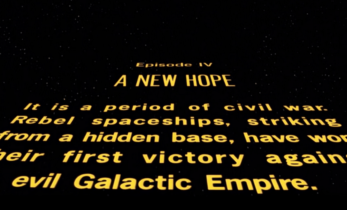Greater than 7 minutes, my friend!
Revise that! Originally posted on 28 August 2012 on That elusive pair of jeans
I must have been feeling upbeat yesterday. Why else would I accept a couple of assignments involving the revision of translations from German into English?
There is nothing unusual about this. The last revision I did for this particular agency was a mere five days ago. This would suggest that I cannot possibly have forgotten what the experience is like.
Perhaps I thought it would make a nice change from translating? I do have other work on the go, so one option was to decline the work on that basis. Perhaps I thought I could defy the phases of the moon and remain calm, focused and precise throughout the assignment? What was I thinking?
The translation was not very bad. Rather, it was not good at all. Some bits were passable. And so they should be, for these are the bits that the average professional translator translates upside down and blindfold with his or her left pinkie. It sounded wrong almost at every turn. It did not hang together. It sounded like a translation. Shudder!
When I realised that the central character in this text was being reported as having, “graduated from a diploma in something-or-other” (vagueness to protect everyone, really), I felt compelled to remove my spectacles, furrow my brow with additional assistance from my thumb and forefinger, get up from my desk, open the front door and look across at the hill in Psalm 121 fashion. For ease of reference,
“I will lift up mine eyes unto the hills from whence cometh my help.
My help cometh from the Lord which hath made heaven and earth.”
I returned to my desk thus fortified. I reminded myself of an important aspect of this type of revision: the principle of minimum intervention. With this in mind I read through the entire text trying to see what the overall approach and style of this translator was, while simultaneously checking the source text for accuracy.
The only “interventions” I made were those handy little spaces one can put at the end of a Trados segment so that it renders the whole segment “rejected”. In the old days, yellow highlighter in Word did the job. I was proud of myself that I did not alter a single thing until I had read the whole piece.
The chief problem was that the translator had not tried to see the overall picture. It seemed that the translator had not thought about the purpose of the text at all. If he or she had, I feel certain that a slightly better-crafted translation would have been delivered.
As I picked my way through one wince-inducing phrase after the other, I became convinced that the translator did indeed have a mother tongue, but that it was not English as she is spoke.
I do not normally complain, for two reasons. The first is that translation is humbling work, and I would not be so arrogant as to believe that every single piece of work I do is without blemish. The second is that a better translation is often possible. It is the nature of the beast.
This time, however I did complain to the effect that texts of this type for publication ought not to be given to anyone except experienced translators, and certainly not to non natives.
I understand from the reply I received that the translation was definitely done by someone whose mother tongue is English. I have been requested to provide feedback.
So, what went so wrong that it could fluster my calm exterior? Is it the nagging thought that perhaps this translator gets paid the same rate as I do? No. That is no business of mine.
If the translator was indeed an English native – and I have no reason to disbelieve the agency, for which I have been working for some time – then he or she must lack experience.
Tips for inexperienced translators
Think about the purpose of the text.
Who is writing it? – A corporate entity? Who is going to read it? Employees? Important customers? Or (God forbid!) other translators?
Where is it going to be published? In the newspaper? Online? Staff newspaper? Glossy brochure?
Check dates. This will save you getting confused over verb tenses and mistranslating. You would think that this is a simple, obvious thing to do. It may well be the middle of January when you translate the text. If the source text says, “The company has been using its new logo since the beginning of March”, do not translate this as, “The company will start using its new logo in March”, because in that short sentence you will have committed two translation errors, and probably more similar errors elsewhere in the text. Instead, look for a clue. On papers such as these there is normally something which says, “publication date” or “for release on X date”. In this example, the publication date is probably mid-March. Remember, in journalism and marketing, one does not have to wait for something to happen before writing about it.
What is the core message of the text? e.g. “We are a great company with a wonderful new manager” or, “We are a wonderful company even though our new manager expresses himself as if he constantly has to deal with a misplaced carrot?” You decide.
If the text is for a medium-sized or large company, it is imperative that you read the company website in the source language and, if possible, in the target language of your translation. This can save you agonising minutes of terminological choices, and plain embarrassment at making up your own name for their flagship division.
Do not translate word for word. Do not translate word for word. I repeated that.
Hands up, English natives: Who says “Furthermore”, “Moreover” or “In addition comma” at the beginning of their sentences? I imagine I am addressing an entire stadium full of people at the London 2012 Olympics. There is a hushed silence. Only two people, after much prompting by their friends, raise their hands.
You get my point: Even if the dictionary says that these German words mean what they mean, find another way to express them. Use them sparingly (stadium image) if you have to, but please do not put them all in the same paragraph. (I have done so below, by way of example; it is tiresome.) German has many set phrases or structures which connect succeeding sentences to the preceding ones. So has English. But they are not always the same. Some can occasionally be omitted in the target text or conveyed by other lexical elements.
Do not translate one sentence at a time, and then forget about it. CAT tools try to segment our thoughts, but you must resist! German is streaks ahead of English when it comes to packing a sentence full of information. This is why English sometimes needs two sentences where German only needs one. Be flexible!
Understand your source text thoroughly. I do not care how many double backward somersaults with twists you have to do to arrive at that point. Just understand it. Do not guess. The path between source language and target language is treacherous enough, without you guessing. Once you arrive at the other side, use your imagination, your English dictionary, your thesaurus. Search the Internet if you do not think that “subsequent measurement date” is not a real accounting term. Read. Learn. Remember.
Do not follow the word order of the source text. Seriously. Yes, we all know Germans do things with their verbs that the English can only dream of. I am referring to the adverbial phrases of time and place. English has word order options for these which German does not. Use them. Change your sentences around. Remember, in English, we only encounter sentences beginning, “In the year 2025, …” in science fiction. Normal people simply say, “In 2025 …”
If you get stuck, do not stay stuck. Carry on with the translation if the bit you’re stuck on is not pivotal. Come back to the sticky bit from time to time simply to check if it makes sense yet. If not, do not despair. It will.
If it does not, then post a query on your favourite terminology forum. When doing so, please be smart enough to remove all evidence of the origin of your text, including corporate sounding acronyms. Keep confidential information confidential.
Remember Some of us have our acronym code-cracking diplomas, and can spot wording idiosyncrasies from multinationals a mile away.
Give some translators half a sentence, and they will find the third draft of an obscure document circulated to only 60 people on the whole planet somewhere. And they will provide you with a link, moreover. In addition, they will ask you, “Is this the document you’re translating?” Furthermore, they will give you a downright bollocking (lovely word!) for being so careless about respecting confidentiality. I should mention, however (<– there’s another word with which you should not begin your sentence), that you only learn by asking good questions. Because they beget good answers from good translators (if you’re lucky). And only start your sentences with “And” or “Because” on your own blog, where you are the Editor-in-Chief. 🙂
If you have recently embarked upon your career as a translator, your head is hurting around about now.
I shall leave you with my last piece of advice. Read through your completed translation. Check your work. Check your work. Read through it again and again. Read through it aloud again and again. Correct the typographical errors. Rework the bits that sound strange. Read through the whole thing again.
Just when you think you are finished, and ready to deliver your work, imagine that someone who has been translating for longer than you have been alive will probably be revising your work. Read through your work one more time, and correct the errors you missed. Then – and only then – send it to the client.
Then (and this is entirely optional). Go outside. Take a look at the view. And recite Psalm 121, or your spiritual equivalent.
For all the minor annoyances one can experience when revising other translators’ work, those of us with more experience have to remember that we were beginners once upon a time, and doff our caps silently at the kind souls who mentored us. A little encouragement can go a long way, and I reckon that is the kind of feedback I shall end up giving to the young translator who made my day today.
My two cents’ worth, as they say in the trade. 🙂
©2012 Allison Wright





Awesome! Thank you so much for sharing this amazing post, Allison! This is a historic moment in the life of The Open Mic community! You’re officially our first contributor! Lovely post, keep them coming! 🙂
Oh, wow! An unexpected honour! I had no idea.
I have just noticed the featured image is not displaying properly on my 19″ screen or my laptop screen. (The latter is Widescreen) I didn’t notice any sizing options when I inserted it into the post. I shall insert a caption on the image for the moment, until I get time perhaps to resize the image offline.
Hi Allison. When it comes to the featured image the recommended size is 1700×700. That one should fit perfectly. Everything smaller than that may look a bit akward. I reccomend using unsplash.com or pexeles.com for images. They have thousands of professional images that you can use anywhere for free 🙂
You can easily change your Featured Image by going to Menu > Manage Your Stories and then clicking an edit button and choosing a different image in the editor.
I will create a new image soon. 🙂
Another tiny suggestion: for better results use images that don’t have any text on it, because as you can see, The Open Mic places the Title and the Subtitle on top of the image so it might interfere with your text.
But don’t worry, it’ll be better next time! 🙂